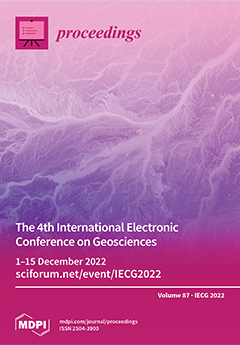Open AccessProceeding Paper
Ionospheric Effects of Natural Hazards in Geophysics: From Single Examples to Statistical Studies Applied to M5.5+ Earthquakes
by
Dedalo Marchetti, Kaiguang Zhu, Rui Yan, Zeren Zhima, Xuhui Shen, Wenqi Chen, Yuqi Cheng, Mengxuan Fan, Ting Wang, Jiami Wen, Donghua Zhang, Hanshuo Zhang and Yiqun Zhang
Cited by 6 | Viewed by 1655
Abstract
Geophysical natural hazards, such as earthquakes and volcano eruptions, can have catastrophic effects on the population depending on the location and quality of construction. From the geophysical point of view, several aspects are still debated in the preparation phase of such events. In
[...] Read more.
Geophysical natural hazards, such as earthquakes and volcano eruptions, can have catastrophic effects on the population depending on the location and quality of construction. From the geophysical point of view, several aspects are still debated in the preparation phase of such events. In particular, several theories propose that prior to an earthquake or volcano eruption, the releases of gas, fluids or charged particles from the lithosphere (e.g., from the fault for the earthquake) could create some effects on the atmosphere and ionosphere. In this work, several single examples will be shown of possible candidates of pre-earthquake ionospheric disturbances recorded by the China National Space Administration (in partnership with the Italian Space Agency), China Seismo Electromagnetic Satellite (CSES) and European Space Agency
Swarm constellation. The examples show anomalous ionospheric status in terms of magnetic disturbances or increase of electron density before earthquakes, such as Mw = 7.1 Ridgecrest (US) 2019, or during the large recent volcano eruption of Hunga Tonga-Hunga Ha’Apai on 15 January 2022. In these cases, some couplings between the lithosphere and ionosphere are proposed. Finally, verifying if such pre-event ionospheric disturbances are by “chance” or are really linked to the incoming event is a crucial point. For this purpose, we perform worldwide statistical studies, not only supporting the recurrence of such phenomena for about 15% of M5.5+ shallow earthquakes but also showing a link between the magnitude of the upcoming seismic events and the pre-earthquake anticipation time. Furthermore, we also show the influence of the location (sea or land) on the frequency of the ionospheric electromagnetic disturbance.
Full article
►▼
Show Figures



